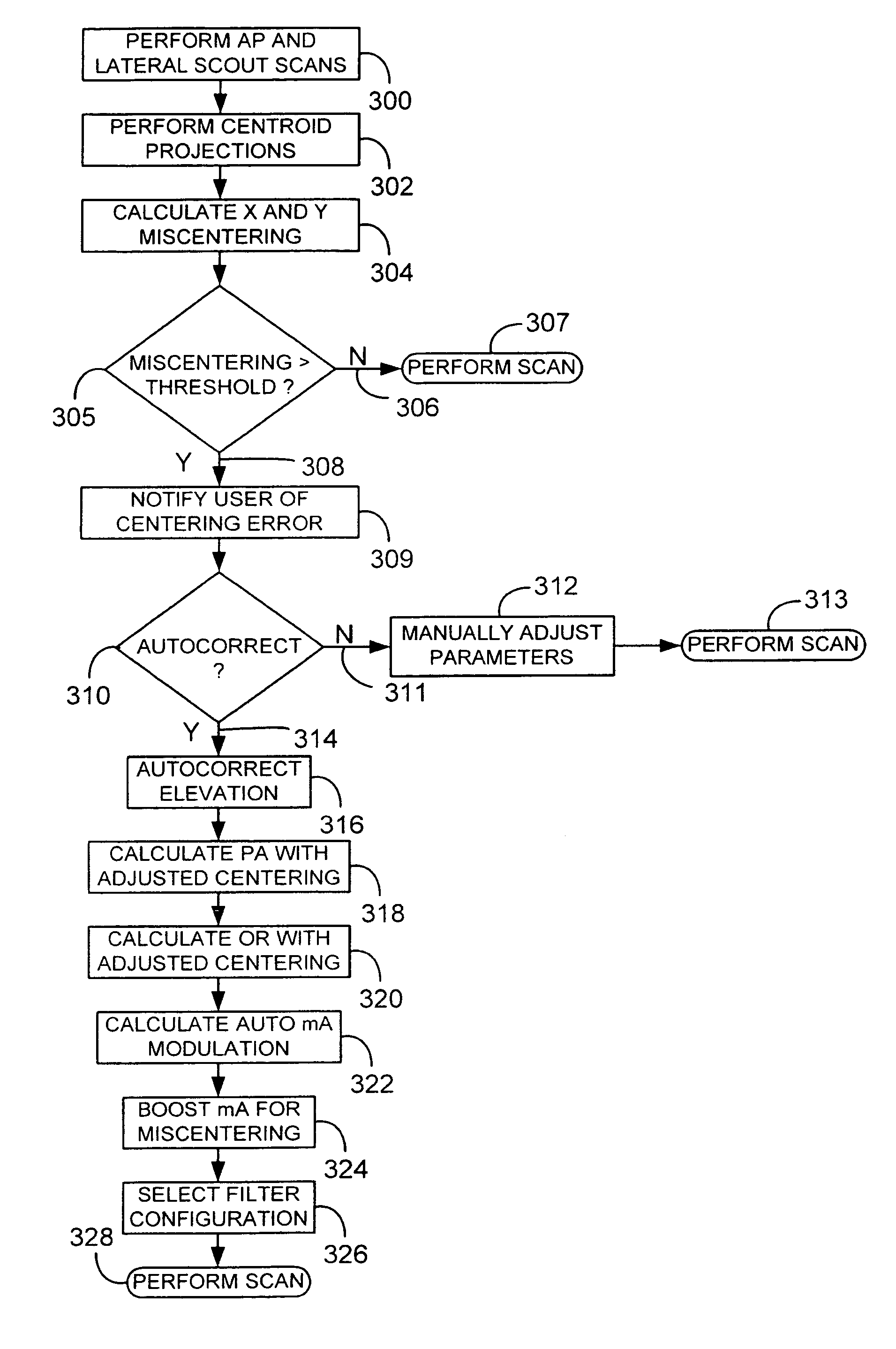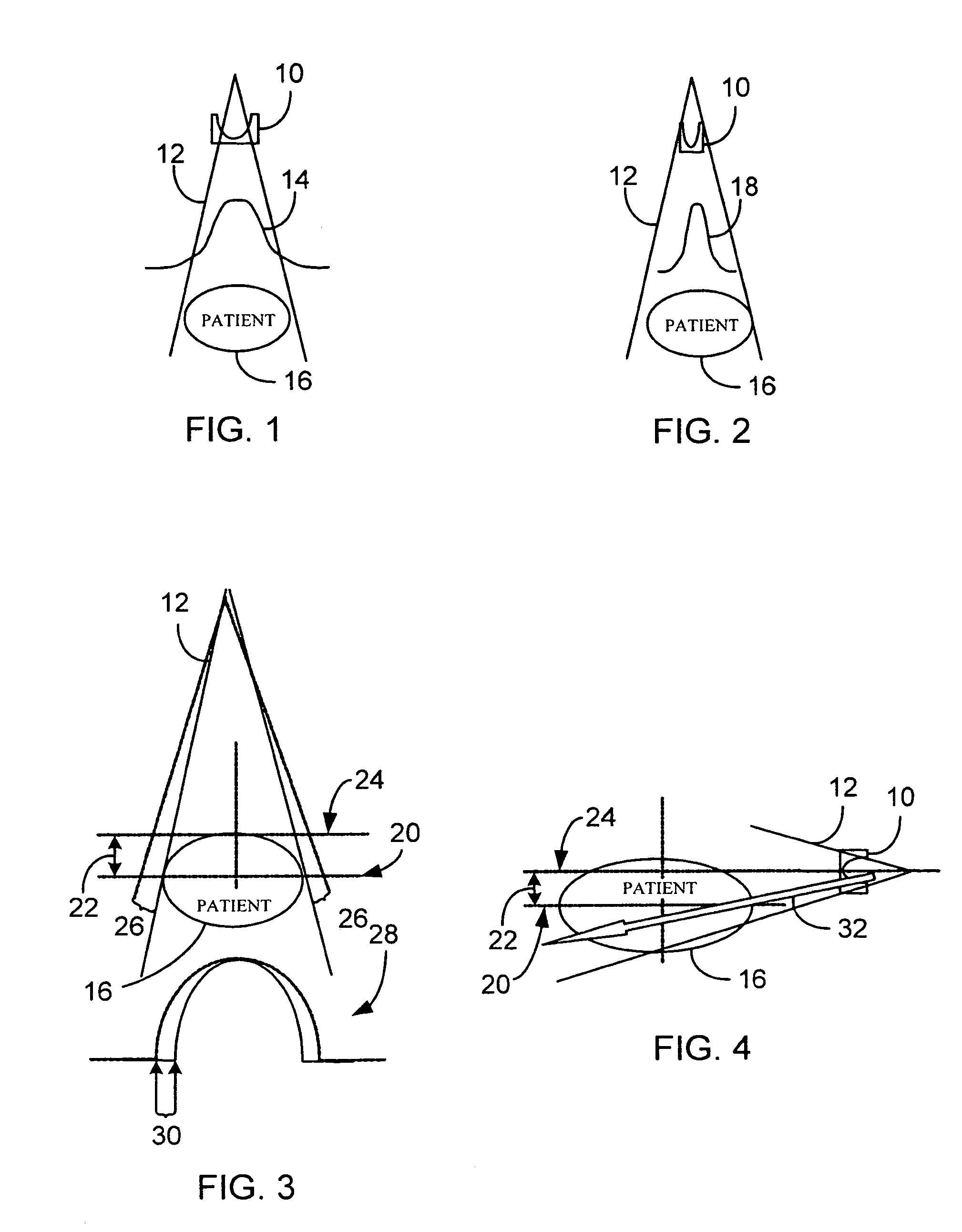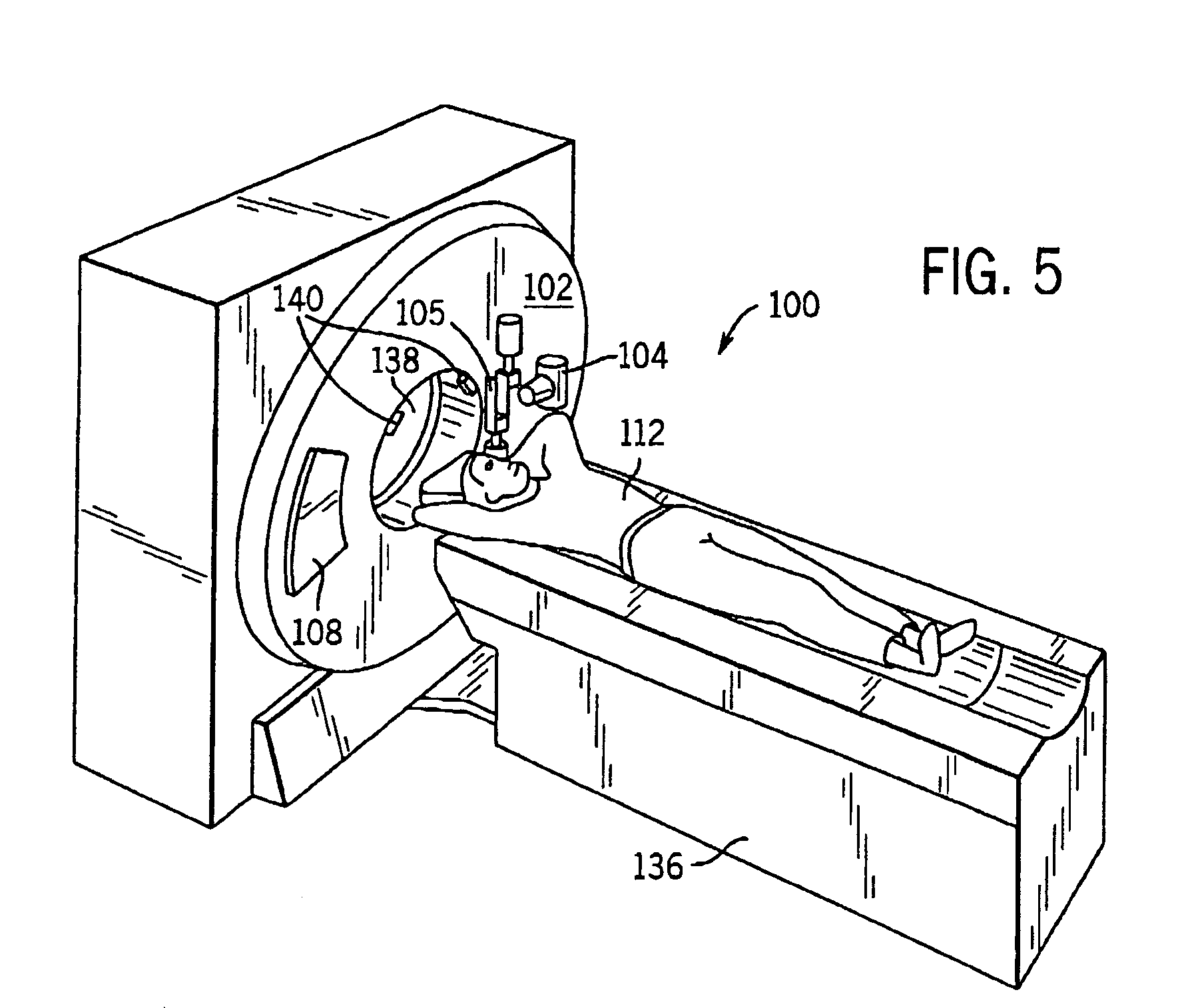System and method of determining a center of mass of an imaging subject for x-ray flux management control
a technology of x-ray flux management and imaging subject, which is applied in the field of diagnostic imaging, can solve the problems of increasing the overall manufacturing cost of the imaging system, degrading image quality and dose efficiency, and unable to meet the needs of patients, so as to reduce the value of mis-elevation
- Summary
- Abstract
- Description
- Claims
- Application Information
AI Technical Summary
Benefits of technology
Problems solved by technology
Method used
Image
Examples
Embodiment Construction
[0043]The present invention is directed to a method and system that automatically determines the patient's size, shape, and centering within an imaging volume and dynamically controls x-ray flux accordingly. Preferably, one or two scout scans together with a plurality of sensors integrally formed with the CT scanner provide patient particulars. The present invention uses the information to provide centering information to the user, allow user input, automatically re-center the patient elevation, correct projection area measurements for dynamic tube current control and select the correct bowtie filter for the optimum dose efficiency.
[0044]The operating environment of the present invention is described with respect to a four-slice computed tomography (CT) system. However, it will be appreciated by those skilled in the art that the present invention is equally applicable for use with single-slice or other multi-slice configurations. Moreover, the present invention will be described wit...
PUM
 Login to View More
Login to View More Abstract
Description
Claims
Application Information
 Login to View More
Login to View More - R&D
- Intellectual Property
- Life Sciences
- Materials
- Tech Scout
- Unparalleled Data Quality
- Higher Quality Content
- 60% Fewer Hallucinations
Browse by: Latest US Patents, China's latest patents, Technical Efficacy Thesaurus, Application Domain, Technology Topic, Popular Technical Reports.
© 2025 PatSnap. All rights reserved.Legal|Privacy policy|Modern Slavery Act Transparency Statement|Sitemap|About US| Contact US: help@patsnap.com



